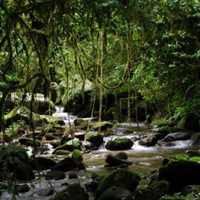Vertical distribution and daily patterns of birds in the dry deciduous forests of central western Madagascar

All claims expressed in this article are solely those of the authors and do not necessarily represent those of their affiliated organizations, or those of the publisher, the editors and the reviewers. Any product that may be evaluated in this article or claim that may be made by its manufacturer is not guaranteed or endorsed by the publisher.
Authors
Data on the vertical distribution and ecological requirements of forest birds in western Madagascar are poorly documented. Strata use of forest-dwelling birds associated with vegetation structure and daily temperature patterns was examined in the dry deciduous forest of Kirindy. Six line transects of 1000 m each were used to survey birds and linear sampling to quantify vegetation structure. Data loggers were employed to record differences in temperature across vertical forest strata. A total of 3468 observations of 37 bird species were recorded. In the early morning, birds called frequently and used the canopy, at mid-day, when temperature in the upper strata increased on average around 7ºC, they tended to descend along a vertical gradient to the denser vegetation of the understory, presumably to avoid heat stress. In the case of largerbodied canopy birds, they occupied the mid-story during the heat of the day. Regardless of the time of the day, the mid-story was widely used by forest birds for feeding, roosting, and preening. These results demonstrate the sensitivity and vertical movements of birds to varying environmental conditions and provide new information on the ecology of Malagasy dry forest-dwelling birds.
How to Cite
PAGEPress has chosen to apply the Creative Commons Attribution NonCommercial 4.0 International License (CC BY-NC 4.0) to all manuscripts to be published.







